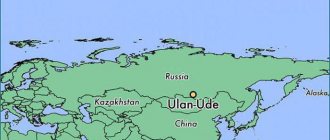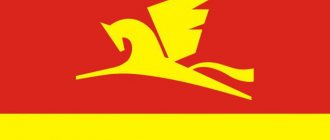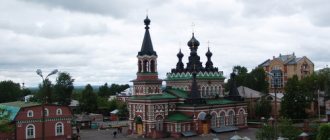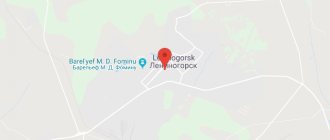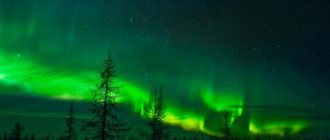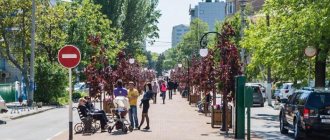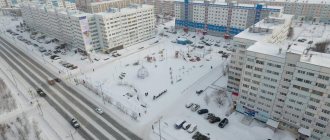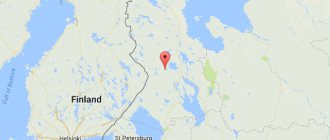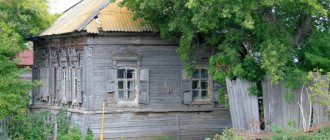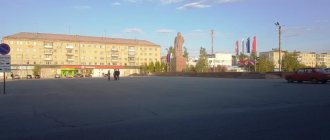Veliky Novgorod was built in the Preilmenskaya lowland on the coast of the Volkhov River. The distance to Moscow is more than 500 kilometers, and to St. Petersburg - within 200 kilometers. Veliky Novgorod is considered the most ancient city, its foundation dates back to 859.
Today the population of Veliky Novgorod is 224,297 people. While in 2022 it was 222,868 people. The demographic situation is ambiguous: there are wave-like surges of growth and decline. The population density at the beginning of 2019 was 2405.6 people per square meter. Residents of Veliky Novgorod are called Novgorodians, Novgorodets, Novgorodka.
On average, the population of Veliky Novgorod is gradually decreasing. Because there are more deaths than children born. Every day more than 20 children are born, and about 30 people die. More than 30 people are leaving. Migration cards are issued to 34 people.
General information
The area of the municipality is 90 square kilometers. The founding date of the city is considered to be the 9th century. Veliky Novgorod is rightfully considered the stronghold of Russian statehood. It was in it that Rurik was called to reign. In the Middle Ages, the city headed Novgorod Rus', and later served as an important economic and political center of the country.
At the beginning of the 16th century, the population of Veliky Novgorod decreased significantly. The city was captured by Swedish troops. In 1700 he was released. It was included in the St. Petersburg province. Later he headed the Novgorod region. At that time, there were no large industrial complexes in the city. Therefore, exiles were sent to the populated area.
During this period, the population density of Veliky Novgorod was minimal. The city began to develop and grow after the end of World War II. Today it is a beautiful and modern settlement. It is divided into the following districts:
- Station.
- "White City".
- West.
- Grigorovo.
- Trade city.
- Center.
- Pskovsky.
- Krechivitsy.
- Trubichino.
- Pankovka.
- Syrkovo.
Administrative division
Geographically, Veliky Novgorod, the population of which is distributed unevenly in its different parts, is divided into 9 districts. These are several villages absorbed by the city, and the original parts: the center, the station, the west.
The most attractive place to live is the western region; there is a well-developed social infrastructure, high-quality but not new housing, and a high supply of transport. The city center is famous for its sights, which are pleasant to explore, but living here is quite expensive and problematic due to transport difficulties and overcrowding.
The most populated area is the so-called Trade Side; many shops, banks, and restaurants are concentrated here. But there is also a lot of residential real estate here.
Population
In 2005, the municipality had a population of 219,000. In 2010, this figure decreased to 218,717. In 2014 it was 219,971. In 2017, the population of Veliky Novgorod reached 222,594 people. The minimum number of citizens was noted in 2009. The maximum peaks occurred in 2010 and 2015. According to statistics, the municipal center has a population of 2,400 people per square kilometer. Local residents are usually called Novgorodians, and women Novgorodians.
Environmental and climatic conditions
The city is located on the Volkhov River, close to the amazing Lake Ilmen. The favorable ecological situation, which is explained by low air pollution, especially attracts the attention of tourists. Winter in Veliky Novgorod, in most cases, indulges in heavy snow; the air temperature varies around -15°C. Summer is famous for its warm and bright sun, the average temperature is about +20°C. At any time of the year you can enjoy the unique and magical atmosphere of the ancient city.
Demographic situation
The population of Veliky Novgorod shows a gradual natural decline. The number of deaths exceeds the number of babies born. In 2016, 10,736 people died in the region. A total of 7,204 children were born. The difference was colossal. On average, about twenty children are born in the region every day. More than thirty people die. Leaves the region 33. Migration cards are issued to 34 foreign nationals.
The population of Veliky Novgorod is directly affected by the incidence of the following diseases:
- pathologies of the circulatory system;
- oncological neoplasms;
- cardiac dysfunction;
- cerebrovascular abnormalities.
Transport and accidents account for about 17%. The proportion of suicides and cases of alcohol poisoning exceeds 12%. More than thirty babies under the age of one die every year. The main reason is pathologies of fetal development and maternal illness. Congenital anomalies account for 22%.
The average migration increase is 360 people per year. About a thousand people leave for permanent residence in large populated areas of the North-Western region. There are 370 Nizhny Novgorod residents remaining in the Central District. The Southern Federal District elects approximately one hundred citizens. They also go to the Volga region, the Urals, Siberia and the Caucasus. The maximum migration increase was registered from Ukraine. However, in 2016 it decreased by 12%. This trend continues today. A large number of migrants come from Uzbekistan and Tajikistan.
Due to the lack of jobs, Veliky Novgorod remains attractive only to people of retirement age. The settlement boasts a unique architectural heritage and excellent recreational conditions. Social infrastructure is developed at the proper level. The region has a resettlement program for ethnic Russians coming from the countries of the former USSR. In Veliky Novgorod there are 25 people from Uzbekistan and approximately 20 residents of Kazakhstan. They are provided with assistance in finding work and providing housing. Financial assistance is provided.
Map
| Veliky Novgorod: maps |
Veliky Novgorod: photo from space (Google Maps) Veliky Novgorod: photo from space (Microsoft Virtual Earth)
| Velikiy Novgorod. Nearest cities. Distances in km. on the map (in brackets along roads) + direction. Using the hyperlink in the distance , you can get the route (information courtesy of the AutoTransInfo website) | |||
| 1 | Pankovka | 5 () | Z |
| 2 | Proletarian | 25 () | IN |
| 3 | Shimsk | 47 (47) | SW |
| 4 | Batetsky | 58 (63) | Z |
| 5 | Staraya Russa | 59 (96) | YU |
| 6 | Parfino | 64 (116) | YU |
| 7 | Malaya Vishera | 65 (87) | NE |
| 8 | Miracle | 70 (70) | WITH |
| 9 | Soltsy | 71 (77) | SW |
| 10 | Volot | 73 (113) | SW |
| 11 | Sacrum | 77 (82) | SE |
| 12 | Meadows | 86 (97) | Z |
| 13 | Lyuban | 92 (101) | WITH |
| 14 | Friendly Gorka (Leningrad region) | 107 () | NW |
| 15 | Bottom | 108 (123) | SW |
| 16 | Kirishi | 111 (122) | NE |
| 17 | Plyussa (Pskov region) | 111 (197) | Z |
| 18 | Vyritsa (Leningrad region) | 112 (172) | NW |
| 19 | Siversky (Leningrad region) | 115 (175) | NW |
| 20 | Tosno | 116 (131) | WITH |
| 21 | Poddorye | 117 (164) | YU |
| 22 | Okulovka | 118 (133) | IN |
| 23 | Demyansk | 119 (178) | SE |
a brief description of
Located in the Ilmen Lowland, 6 km from Lake Ilmen, 552 km northwest of Moscow.
Port on the river Volkhov. Railway junction lines. Veliky Novgorod is a popular center of tourism, including international tourism.
In 1949, Novgorod was included in the list of 20 historical cities of the USSR. The urban planning value of its heritage is assessed as world class. In 2010, it was excluded from the list of historical cities.
The climate is moderate continental. Average temperatures in January are -8, July are +17. Precipitation is about 750 mm per year.
Territory (sq. km): 90
Information about the city of Veliky Novgorod on the Russian Wikipedia site
Historical sketch
Novgorod is one of the oldest Russian cities. In Russian chronicles it was first mentioned in 859, in foreign sources mentions of it date back to an even earlier time (the Gothic historian Jordan, 6th century, Novietun is a Celtic tracing of Old Russian Novgorod). In those days, the city was simply a fortified (fenced) village. One of these newly formed cities was given the name New City, usually in world toponymy: Novogorod-Seversky, Nizhny Novgorod, Novgorod-Volynsky, as well as Neustadt, Newtown, Naples, etc.
From the 10th century the second most important center of Kievan Rus.
The location at the junction of the route “from the Varangians to the Greeks” with the Volzhsky contributed to the development already in the 10th century. crafts (iron, wood, leather, jewelry), trade and culture. In 1136-1478. the center of the Novgorod feudal republic, governed by the veche. Along with the veche, there was a Council of Gentlemen headed by an archbishop, who was elected at the veche, as well as the highest officials of the republic from among the boyars: the townspeople and the thousand.
In the chronicles under 1169 and under later dates the city is mentioned as Veliky Novgorod. In the 15th century, in the charters issued from the veche, the city was called Mister Sovereign Veliky Novgorod. The same name is found in the list of Names of Russian cities near and far (late 14th century - early 15th century), in the Book of the Great Drawing, 1627, in the lists of cities by V.N. Tatishchev, 1739-44, in the Geographical and Statistical Dictionary of P.P. Semenov, vol. 3, 1867, but this form did not receive official recognition. The first attempt to revive it was made by the City Duma in 1914, but war and revolution prevented its implementation.
Under the rule of Novgorod there was a huge territory from the Kola Peninsula to the city of Torzhok, which was administratively divided into 5 parts (pyatins). Trade connections of Veliky Novgorod extended from Flanders and the Hanseatic cities to the Ugra land and from Scandinavia to Astrakhan and Constantinople. Furs, flax, wax, leather raw materials, etc. were exported. During the heyday of the republic (14th - first half of the 15th century), Novgorod consisted of 5 self-governing urban districts - ends: Nerevsky, Lyudin (Goncharsky), Zagorodsky, Slavensky and Plotnitsky with a population of about 30 thousand people
In the middle of the 13th century. - mid 15th century Novgorod is the center of the fight against external aggression from Sweden and the Livonian Order. In 1240, the Novgorod prince Alexander Yaroslavovich defeated the Swedes at the Battle of Neva (after which he was nicknamed Nevsky). In 1241, an army was assembled in Novgorod, which on April 5, 1242 defeated the German knights in the “Battle of the Ice” on Lake Peipsi.
From the middle of the 12th century. - the center of the intense social struggle of the townspeople against the dominance of secular and church feudal lords and merchants (urban armed uprisings of the 12th century, 13-15th centuries).
Ancient Novgorod - an outstanding center of Russian culture, which did not suffer from the Tatar-Mongol invasion (although it paid tribute to the Golden Horde), was the center of chronicles, book writing, and the spread of literacy (752 birch bark letters of the 11th-15th centuries were found), played a big role in the development of Russian architecture, painting and applied arts.
In 1471, the Novgorodians were defeated by Moscow troops on the river. Sheloni and in 1478 Novgorod and all its lands became part of the Russian centralized state. In the 1480-90s. in order to eradicate the Novgorod “liberty”, about 7 thousand people from among the large boyars, clergy, and merchants were expelled from the city to the central regions of Russia; “the best people, guests and boyar children” were resettled from the Moscow land in their place. In 1570, the guardsmen of Ivan IV the Terrible exterminated almost the entire population of Novgorod, down to infants.
In the 16th-18th centuries. remained one of the largest economic and trade centers in Russia. In 1546, in terms of the number of households (5159) and population (35 thousand people), it took 3rd place among Russian cities after Moscow and Pskov.
Severely suffered from the Swedish occupation of 1611-17, but by the mid-17th century. the number of inhabitants increased again. In the 18th century With the development of St. Petersburg, it is gradually losing its trade and economic importance, remaining one of the centers of flax growing. The largest enterprise in Novgorod was the Admiralty sailing factory, which supplied the Baltic Flotilla with sail. There were 8 tanneries.
Since 1708, as part of the Ingermanland province (from 1710 - St. Petersburg), since 1719 the center of the province. Since 1727 the center of the Novgorod province. Since 1776, the center of the Novgorod governorship (since 1796, Novgorod province).
In 1856, in the provincial city of Novgorod, Novgorod province, there were 31 churches, 1331 houses, 261 shops.
By the end of the 19th century. life in Novgorod continued to decline. The city was important only as an administrative center; industry and trade were insignificant.
In 1927, the Novgorod province was liquidated and Novgorod became the district, and since 1930, the regional center of the Leningrad region. Since 1944, the center of the Novgorod region.
During the Great Patriotic War of 1941-45, it was occupied by Nazi troops from August 19, 1941. It was liberated on January 20, 1944 by troops of the Volkhov Front during the Novgorod-Luga operation. It was almost completely destroyed. In 1950-60 It was virtually rebuilt, but retained most of the ancient monuments.
Since June 11, 1999 it has been called Veliky Novgorod.
Municipal indicators
| Index | 1990 | 1999 | 2001 | 2003 | 2005 |
| Demography | |||||
| Number of births, per 1000 population | 12.9 | 7.1 | 8.3 | 9.7 | 9.2 |
| Number of deaths, per 1000 population | 8.4 | 12.1 | 13.6 | 15.6 | 15.1 |
| Natural increase (decrease), per 1000 population | 4.5 | -5 | -5.3 | -5.9 | -5.9 |
| Standard of living of the population and social sphere | |||||
| Average monthly nominal accrued wages, rub. | 0.294 | 1561.5 | 3149.7 | 5630.9 | 9166.3 |
| Average housing area per inhabitant (at the end of the year), sq.m. | 15.1 | 17.9 | 18.3 | 19.8 | 20.5 |
| Number of preschool institutions, pcs. | 99 | 67 | 67 | 67 | 62 |
| Number of children in preschool institutions, thousand people | 16.3 | 9 | 9.3 | 9.6 | 10.3 |
| Enrollment of children in preschool educational institutions (at the end of the year), as a percentage of the number of children of the corresponding age, % | 89.5 | 93.6 | |||
| Number of daytime educational institutions (at the beginning of the school year), pcs. | 33 | 42 | 41 | 41 | 41 |
| Number of students in daytime educational institutions, thousand people | 30.4 | 33 | 29.6 | 25.3 | 21.5 |
| Number of doctors, people. | 1492 | 1492 | 1521 | 1586 | 1576 |
| Number of nursing staff, people. | 3561 | 3629 | 3470 | 3497 | 3296 |
| Number of hospital institutions, pcs. | 15 | 15 | 17 | 17 | 17 |
| Number of hospital beds, thousand units | 4.4 | 4.3 | 4.2 | 4.1 | 4.3 |
| Number of medical outpatient clinics, pcs. | 25 | 43 | 45 | 49 | 49 |
| Capacity of medical outpatient clinics, visits per shift, thousand units. | 6.1 | 7 | 7.3 | 7.7 | 7.6 |
| Number of registered crimes, pcs. | 4009 | 5591 | 5789 | 4491 | 5540 |
| Persons who committed crimes were identified, persons. | 1542 | 2061 | 2375 | 1970 | 1213 |
| Economy, industry | |||||
| Number of enterprises and organizations (at the end of the year), pcs. | 7047 | 8374 | 2494 | 6468 | |
| Number of operating enterprises by type of activity: mining (at the end of the year), pcs. | 0 | ||||
| Number of operating enterprises by type of activity: manufacturing (at the end of the year), pcs. | 201 | ||||
| Number of operating enterprises by type of activity production and distribution of electricity, gas and water (at the end of the year), pcs. | 47 | ||||
| Volume of shipped goods of own production by type of mining (in actual prices), million rubles. | 0 | ||||
| Volume of shipped goods of own production by type of manufacturing (in actual prices), million rubles. | 29231.4 | ||||
| Volume of shipped goods of own production by type of production and distribution of electricity, gas and water (in actual current prices), million rubles. | 5812.4 | ||||
| Construction | |||||
| Volume of work performed by type of activity “Construction” (until 2004 - volume of work performed under construction contracts), million rubles. | 0.08 | 1290.5 | 1210.2 | 1697.9 | 1564.3 |
| Commissioning of residential buildings, thousand sq.m. of total area | 135.6 | 39 | 36.6 | 37.8 | 74.1 |
| Commissioning of residential buildings, apartments | 526 | 503 | 561 | 1185 | |
| Commissioning of preschool institutions, places | 280 | 0 | 0 | 0 | 0 |
| Commissioning of educational institutions, places | 0 | 218 | 0 | 0 | 0 |
| Commissioning of hospital facilities, beds | 0 | 0 | |||
| Commissioning of outpatient clinics, visits per shift | 480 | 0 | 0 | 0 | 0 |
| Transport | |||||
| Number of bus routes (in intracity traffic), pcs. | 28 | 38 | 37 | 43 | 43 |
| Number of trolleybus routes, pcs. | 3 | 5 | 5 | 5 | |
| Length of operational trolleybus lines (at the end of the year), km | 0 | 13.8 | 13.8 | ||
| Number of passengers transported by buses per year (in intracity traffic), million people. | 112.6 | 136.7 | 139.1 | 135.1 | 119.1 |
| Number of passengers transported by trolleybuses per year, million people. | 0 | 11.5 | 15.8 | 17.7 | 16.9 |
| Connection | |||||
| Number of telephone sets of the city public telephone network, thousand units. | 33.8 | 72.6 | 84 | 103.1 | 101.7 |
| Number of residential telephone sets of the city public telephone network, thousand units. | 20.6 | 56.9 | 63 | 75.2 | 75.4 |
| Number of payphones of the city telephone network (including universal ones), pcs. | 548 | 192 | |||
| Trade and services to the population | |||||
| Retail trade turnover (in actual prices), million rubles. | 4382.6 | 5334.7 | 7965.9 | 11946.4 | |
| Retail trade turnover (in actual prices), per capita, rub. | 18345 | 22492 | 35962 | 54734.4 | |
| Index of physical volume of retail trade turnover, % compared to the previous year | 105.2 | 113 | |||
| Index of physical volume of public catering turnover, % compared to the previous year | 76.9 | 101.5 | |||
| Number of stores, pavilions (at the end of the year), pcs. | 179 | 153 | |||
| Sales area of shops, pavilions (at the end of the year), sq.m. | 34939 | 13316 | |||
| Volume of paid services to the population (in actual prices), million rubles. | 0.096 | 835 | 1691.5 | 3384.9 | 5803 |
| Volume of paid services to the population (in actual prices), per capita, rub. | 0.4 | 3495.2 | 7188.1 | 15281.1 | 26587.6 |
| Volume of household services to the population (in actual prices), million rubles. | 0.018 | 132.5 | 165.8 | 224.7 | 360 |
| Volume of household services to the population (in actual prices), per capita, rub. | 0.079 | 554.6 | 704.7 | 1014.3 | 1649.4 |
| Investments | |||||
| Investments in fixed assets (in actual prices), million rubles. | 0.23 | 1547.1 | 1443.1 | 2932.2 | 3635 |
| Share of investments in fixed assets financed from budgetary funds in the total volume of investments, % | 2.9 | 4.9 | 3.2 | 7.9 | |
Data sources:
- Regions of Russia. Main characteristics of the constituent entities of the Russian Federation: statistical collection. Goskomstat of Russia. - M:, 2003.
- Regions of Russia. Basic socio-economic indicators of cities. Statistical collection. Rosstat. - M:, 2005. p. 132
- Transport in Russia: Statistical collection. Goskomstat. - M:, 2003. pp. 112, 122
- Transport in Russia: Statistical collection. Rosstat. - M:, 2005. pp. 119, 129
- Regions of Russia. Basic socio-economic indicators of cities. 2006. Statistical collection. Rosstat. - M:, 2006. p. 132
Culture, science, education
Novgorod State University named after. Yaroslav the Wise. State Agricultural Academy.
Drama Theater.
Museums, galleries, exhibition halls
State Museum of Artistic Culture of the Novgorod Land 173007, Novgorod region, Veliky Novgorod, Desyatinny Monastery, 3-a Telephone(s): (816-2) 77-42-56 - ex.
bureau Website: https://artmus.natm.ru/ Museum of folk wooden architecture “Vitoslavlitsy” 173007, Novgorod region, Veliky Novgorod, Yuryevskoe highway, museum of wooden architecture Phone(s): (81622) 7-3691 7 -3770 7-8190 Website: https://www.novgorodmuseum.ru/
Novgorod State United Museum-Reserve 173007, Novgorod region, Veliky Novgorod, Kremlin, 11 Phone(s) Website: https://www.novgorodmuseum.ru/
Architecture, sights
The Volkhov River divides the center of Novgorod into two parts - the left bank, the so-called. Sofia, and right bank, so-called. The trading side, rich in monuments facing the river.
On the Sofia side there is the Novgorod Kremlin - Detinets (founded in the 10th century, stone walls 1302-24, total length 1385 m, now a historical and architectural museum-reserve). On its territory are the St. Sophia Cathedral (1045-50), St. Sophia Belfry (15th century, rebuilt in the 16th-19th centuries), Metropolitan Chambers (1770s, based on buildings of the 17th century), buildings of the Vladychny (Episcopal) Palace with Granovita chamber (1433), watchtower "Clock Ringing" (1673), Archbishop's Palace (according to other sources, Judgment Chamber, 1670); the monument “Millennium of Russia” (1862, M.O. Mikeshin), representing in sculptural compositions the main stages of the development of Russian statehood and culture. On the territory of Detinets there is the grave of the poet G.R. Derzhavina.
On the Trade Side there is a complex of buildings of the Yaroslav Dvorishche (the residence of Yaroslav the Wise was located here), the Trade and Gostiny Dvors (late 17th century, rebuilt at the end of the 18th-19th centuries). The ensemble is dominated by the St. Nicholas Cathedral (1113-36). The trade side was limited on the north and west by the earthen ramparts of the “Okolny Gorod” (late 14th century), and had a rectangular grid of streets that was formed as a result of the reconstruction of the city according to the general plan of 1778.
Ordinary buildings destroyed during the Great Patriotic War were replaced by new ones, within the preserved street grid.
Near the river Volkhov, in the northern part of the city there is the Anthony Monastery (founded at the beginning of the 12th century) with the Cathedral of the Nativity of the Virgin Mary (1117).
Near the village of Gorodishche (since 1999 within the boundaries of Novgorod), - the so-called. Rurik settlement, commercial and industrial settlement of the 9th-10th centuries, from the 12th century. - permanent princely residence. Archaeological site.
To the south of Veliky Novgorod, on the left bank of the Volkhov, there is the Yuryev Monastery (mentioned from the beginning of the 12th century) with St. George’s Cathedral (1119). Near the monastery, on the shore of Lake Myachino, there is the Museum-Reserve of Folk Wooden Architecture in Vitoslavitsy (founded in 1964, wooden churches, huts, windmills, barns, etc. from various regions of the Novgorod region are collected).
| Population by year (thousands of inhabitants) | |||||||
| 1811 | 6.3 | 1962 | 72 | 1998 | 232.4 | 2013 | 219.9 |
| 1840 | 16.8 | 1967 | 107 | 2000 | 229.5 | 2014 | 220.0 |
| 1856 | 12.8 | 1970 | 127.9 | 2001 | 227.6 | 2015 | 222.0 |
| 1863 | 17.7 | 1973 | 150 | 2003 | 216.9 | 2016 | 221.9 |
| 1897 | 25.7 | 1976 | 170 | 2005 | 218.8 | 2017 | 222.6 |
| 1913 | 27.5 | 1979 | 186.0 | 2006 | 217.7 | 2018 | 222.9 |
| 1914 | 28.2 | 1982 | 204 | 2007 | 216.7 | 2019 | 224.3 |
| 1926 | 32.8 | 1986 | 224 | 2008 | 216.2 | 2020 | 224.9 |
| 1931 | 36.0 | 1989 | 229.1 | 2010 | 214.8 | 2021 | 225.0 |
| 1939 | 39.8 | 1992 | 235.2 | 2011 | 218.7 | ||
| 1959 | 60.7 | 1996 | 231.9 | 2012 | 219.9 | ||
Literature
- Krogius V.R.
Historical cities of Russia as a phenomenon of its cultural heritage. M.: Progress-Tradition, 2009. pp. 193-197 - Pospelov E.M.
Geographical names of the world: Toponymic dictionary: About 5000 units. M.: Russian dictionaries, Astrel Publishing House LLC, AST Publishing House LLC, 2001. p. 295 - Ch.
ed. Gorkin A.P. Geography of Russia: encyclopedic dictionary. M.: Great Russian Encyclopedia, 1998. pp. 401-403 - Ch.
ed. Lappo G.M. Cities of Russia: encyclopedia. M.: Great Russian Encyclopedia, 1994. pp. 304-310
Age groups
The population of Veliky Novgorod is represented by three groups. The first category includes persons under fifteen years of age. Their share is 20%. The second consists of pensioners. Their number approaches 30%. Approximately half of the city's residents are able-bodied. The trend of aging society, which began at the end of the 20th century, continues to persist. The average age of the population of Veliky Novgorod exceeds 35 years.
History of origin
The first settlers - the Ilmen Slovenes - appeared on the hill between the lake and the river in the 8th century and built a fortress, which in modern times is called Rurik's settlement. The history of the city is connected with Prince Rurik, whom the Novgorodians called to reign in order to stop civil strife, as reported in The Tale of Bygone Years. Rurik’s power extended far; he distributed surrounding lands to their husbands, while he himself ruled in Novgorod.
Education
On the territory of the city there are schools, kindergartens, vocational schools, higher educational institutions and branches of the capital's universities. Specialties from economics and law faculties are traditionally in greatest demand among local applicants. There is an increase in interest in engineering and technical professions.
The cultural life of the region is provided by theaters and museums, art galleries and exhibition centers. The authorities of Veliky Novgorod regularly organize mass celebrations and conduct excursion events designed for guests and residents of the city.
Composition of the population of Veliky Novgorod
Today, representatives of many nationalities live in the municipality. The dominant ethnic group has traditionally been Russians. In the Nizhny Novgorod region their number exceeds 560,000 people. In recent years, the number of Ukrainians has increased several times. Gypsies, Belarusians, Armenians, Tatars, Azerbaijanis, and Uzbeks are registered in the city.
Also living are Moldovans, Chechens, Germans, Tajiks, Chuvashs, Mordovians, Georgians, Koreans and Jews. The minority includes Lezgins, Poles, Finns, Kazakhs, Latvians, Estonians and Udmurts.
Social protection
There are federal and local programs for material support for the poor in the region. Help is provided to large families, disabled people and young parents. To fully replenish the natural population decline, immigrants from other countries are invited. They are paid an allowance. Employees of employment and social protection services in Veliky Novgorod provide assistance in finding a job.
Health camps have been created for children, which operate not only in summer, but also in winter. First-graders from socially vulnerable families receive a full set of stationery and school supplies. Disabled people and pensioners have the right to additional care. They are visited by nurses and medical workers. Requests from representatives of these groups of the population of Veliky Novgorod are given priority by city utility workers.
Unemployment
According to official figures, the unemployment rate in the region is at 2%. This parameter is 0.5% higher than the average. Currently, more than two thousand able-bodied people are registered with the Center for Labor Protection. At the same time, the number of vacancies is two times less. The unofficial level of employment in Veliky Novgorod is much lower. The number of unemployed people who have not registered with the Employment Center is in the thousands.
All of them are in the care of their relatives or have unstable income. These are mainly seasonal workers, housewives, independent entrepreneurs who are engaged in entrepreneurial activities without registering as an individual entrepreneur or establishing a legal entity.
List of the most popular specialties in the city:
- medical workers;
- sellers;
- teachers and education staff;
- drivers;
- installers.
There are always open vacancies for engineers and loaders, cooks, qualified seamstresses, and orderlies.
On average, the employment rate in the city and its subordinate region does not exceed 40%. This figure is lower than the regional coefficient. The government of the Novgorod region is developing programs aimed at increasing jobs and employing the maximum number of citizens.
Sights and famous people of the city
Unlike new housing, there are plenty of attractions in the city - not a single Russian city has preserved so many ancient monuments. More than 50 monuments of ancient Russian architecture have become part of the modern city.
Start your acquaintance with the city with the ancient Kremlin (Detinets) and its towers. Climb the Kokuy Tower, where the observation deck is located, and you will immediately see the architecture of the city, the picturesque surface of Lake Ilmen, and see a clear division of the city on both banks of the river. Next to the ancient Kremlin there is a beautiful park with entertainment, tennis courts, and a concert venue.
The dominant architectural feature and symbol of the city is the St. Sophia Cathedral with a complex of church buildings on the banks of the Volkhov. It was founded by Yaroslav the Wise in the image and likeness of the Kyiv Cathedral. It was also built by Kyiv craftsmen.
Next to the cathedral is the “Millennium of Russia” monument, built in 1862, which will tell you about the heroic pages of history.
Among the outstanding people of the Novgorod land:
- Writers and historians
- Scientists and travelers
- Composers and artists
- Heroes of the Soviet Union
These are dozens, hundreds of famous people who glorified their region. It cannot be otherwise: the city’s rich history, talented people.

